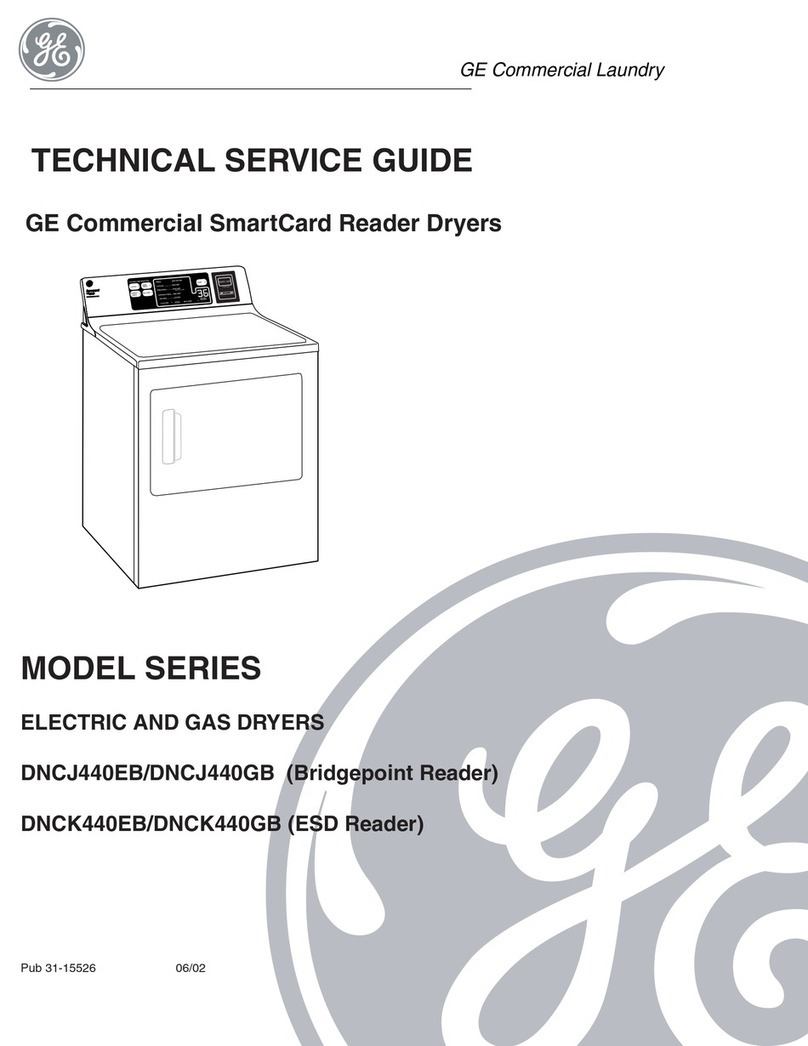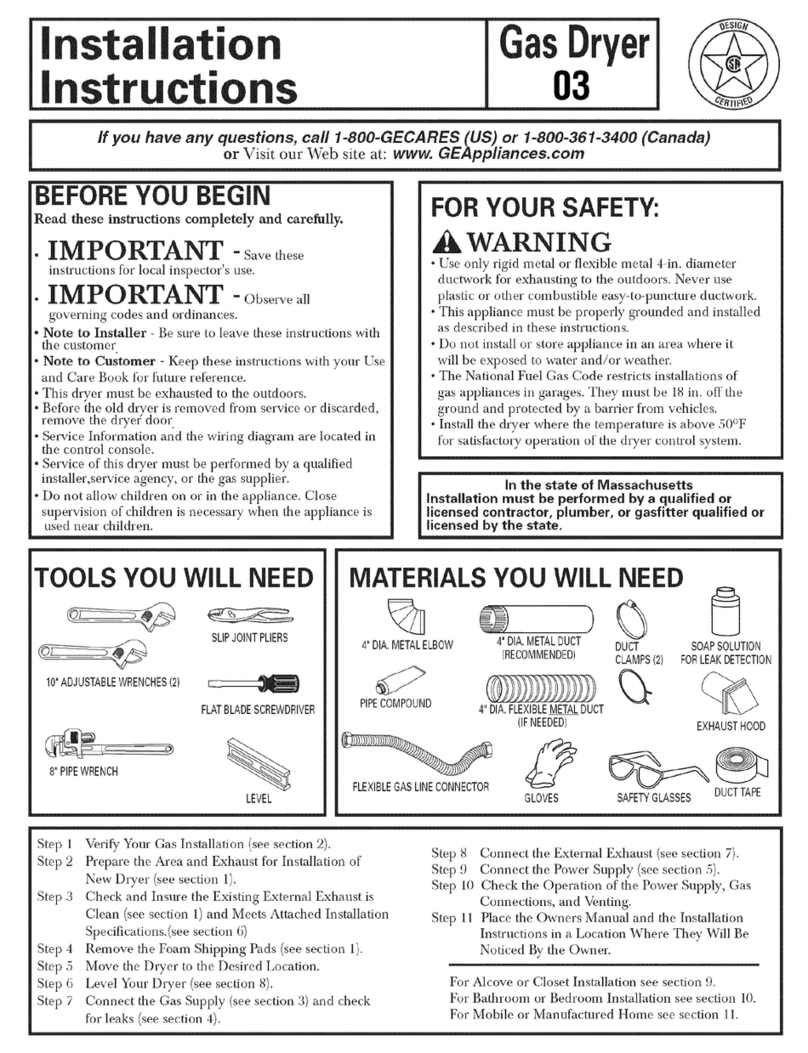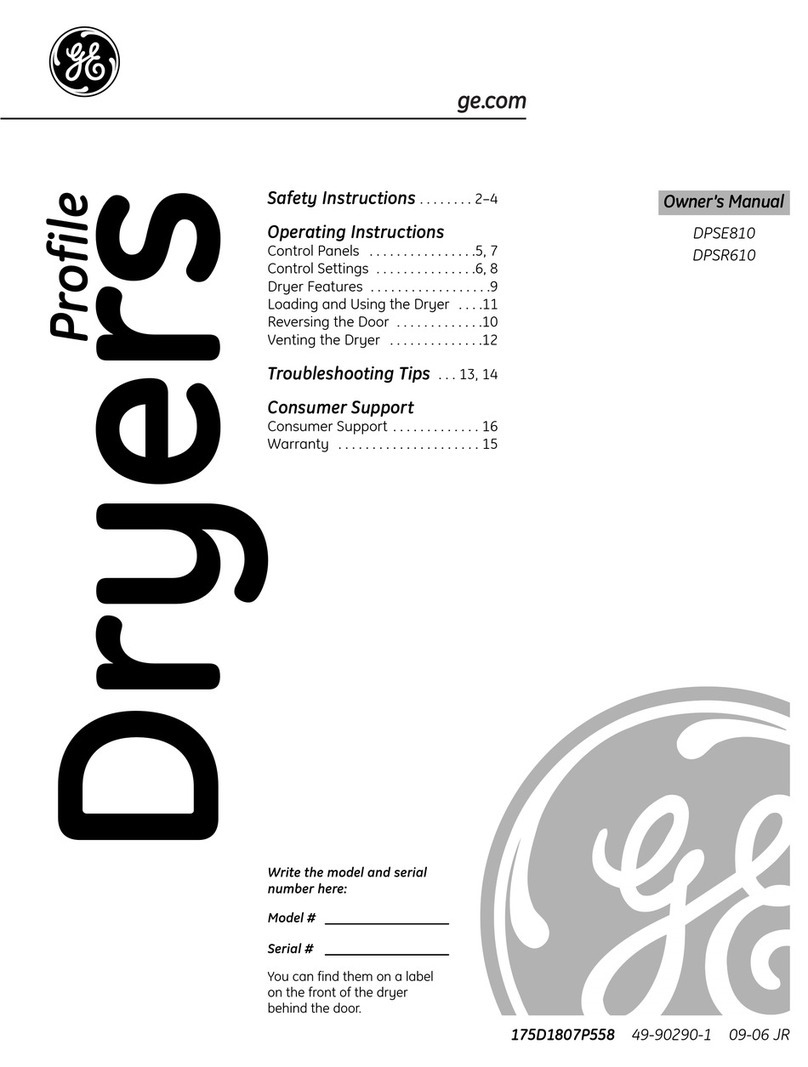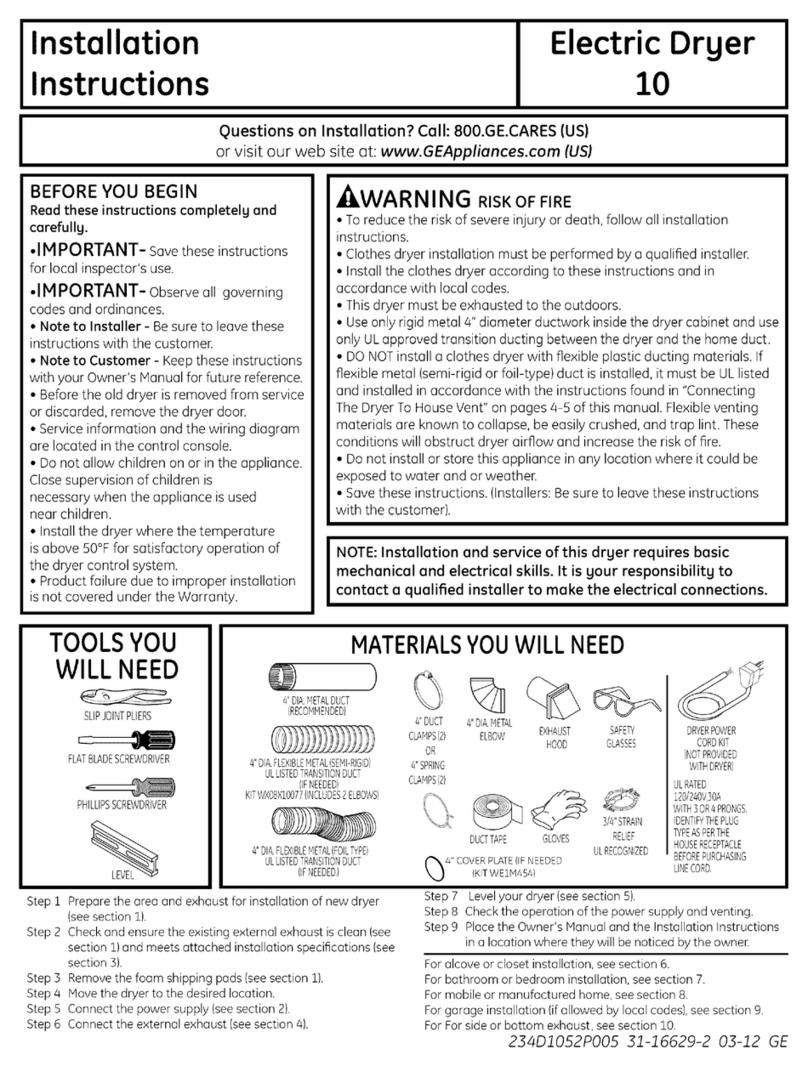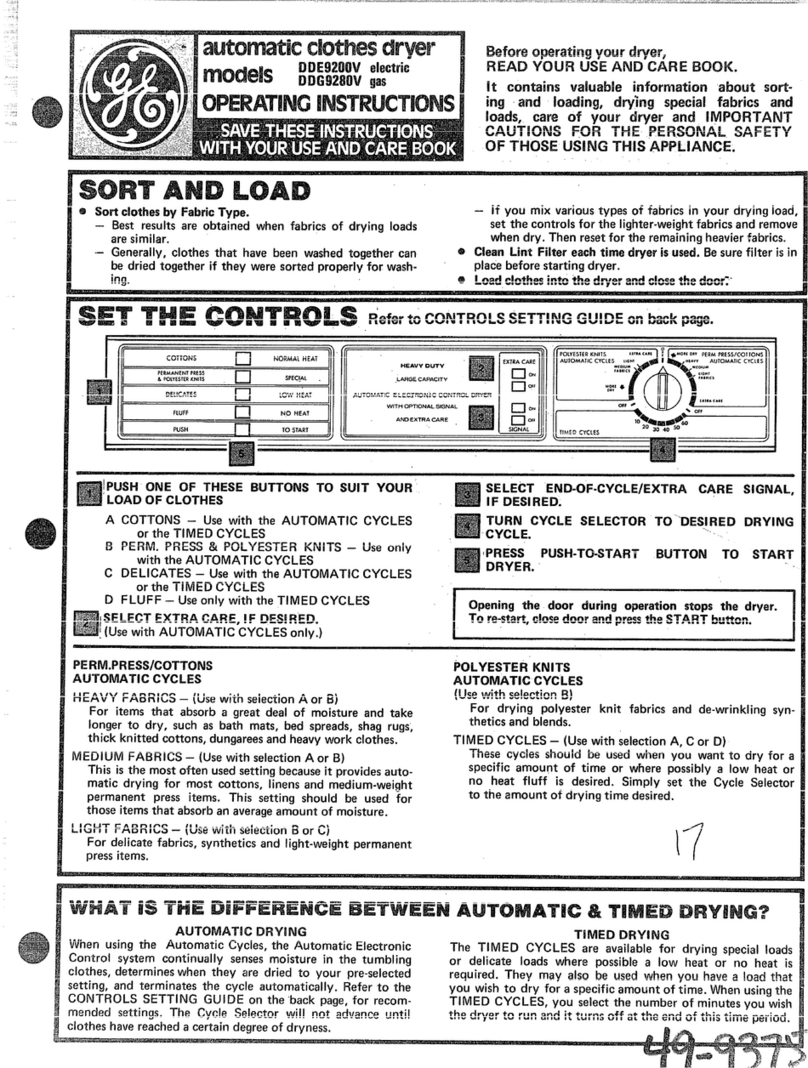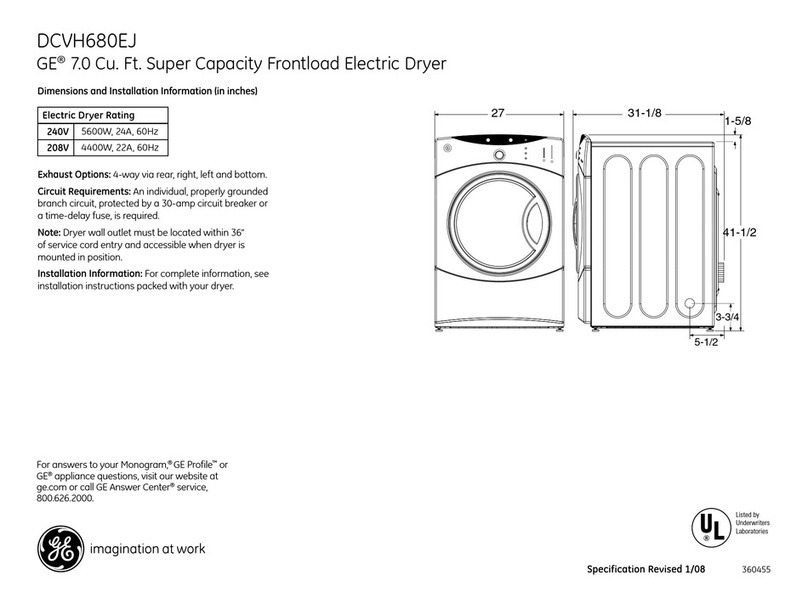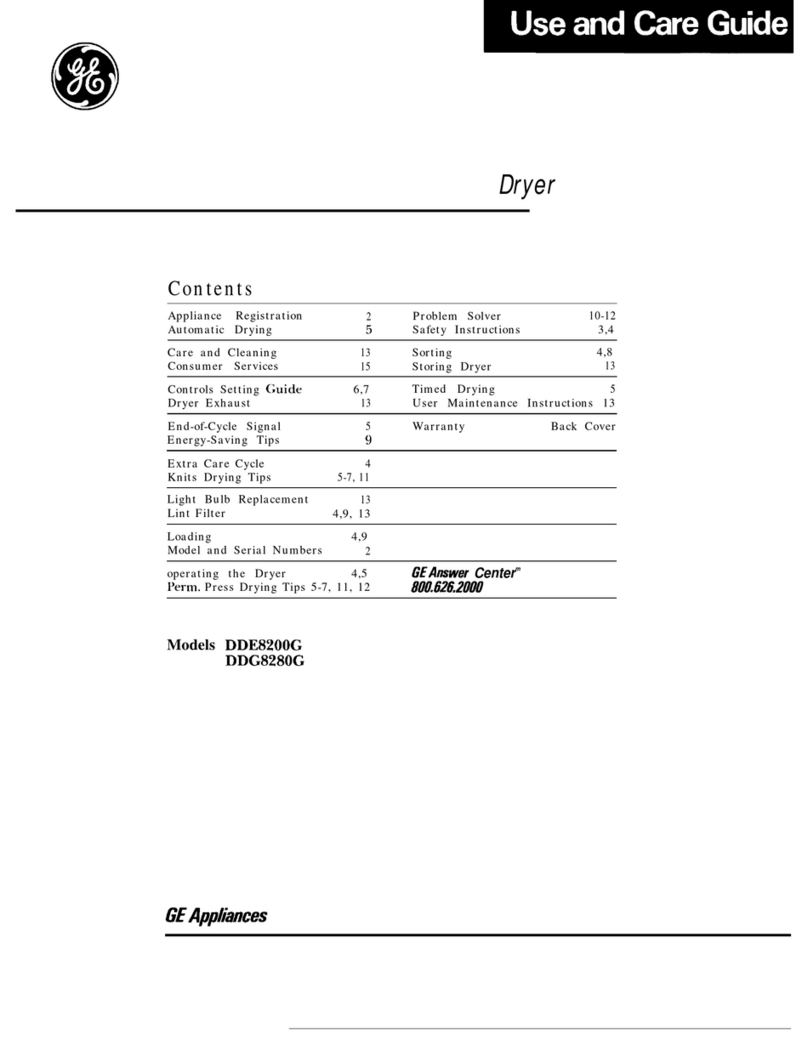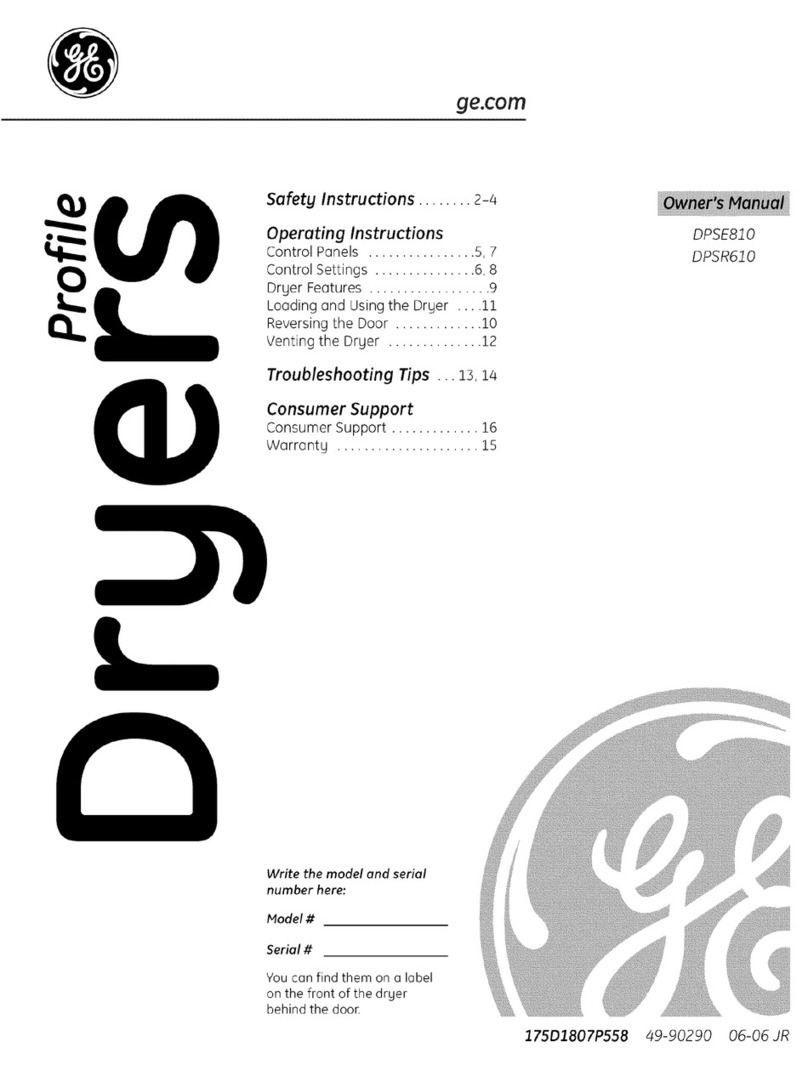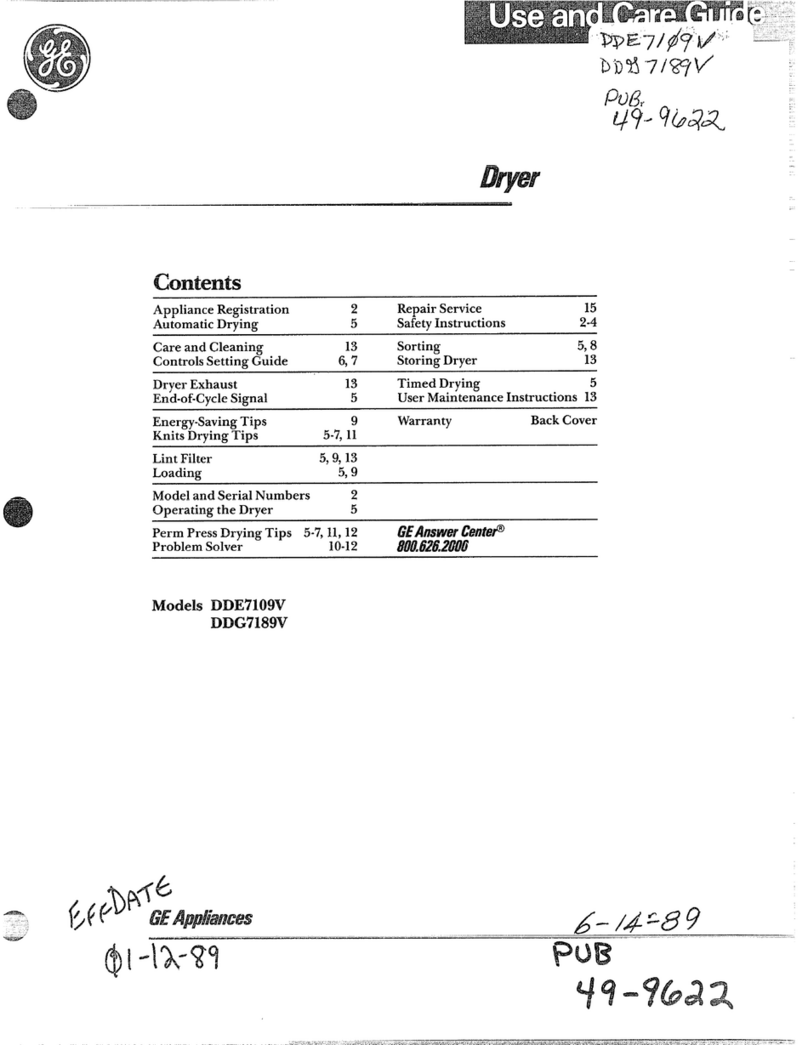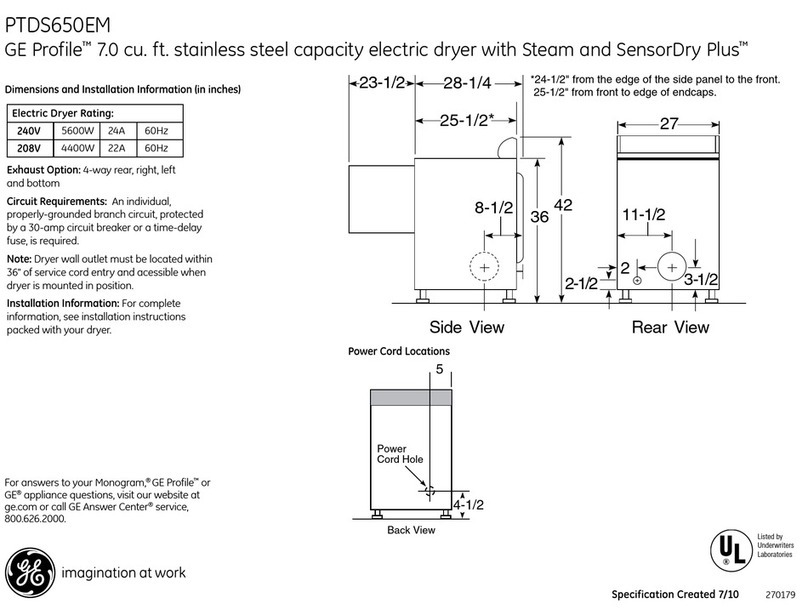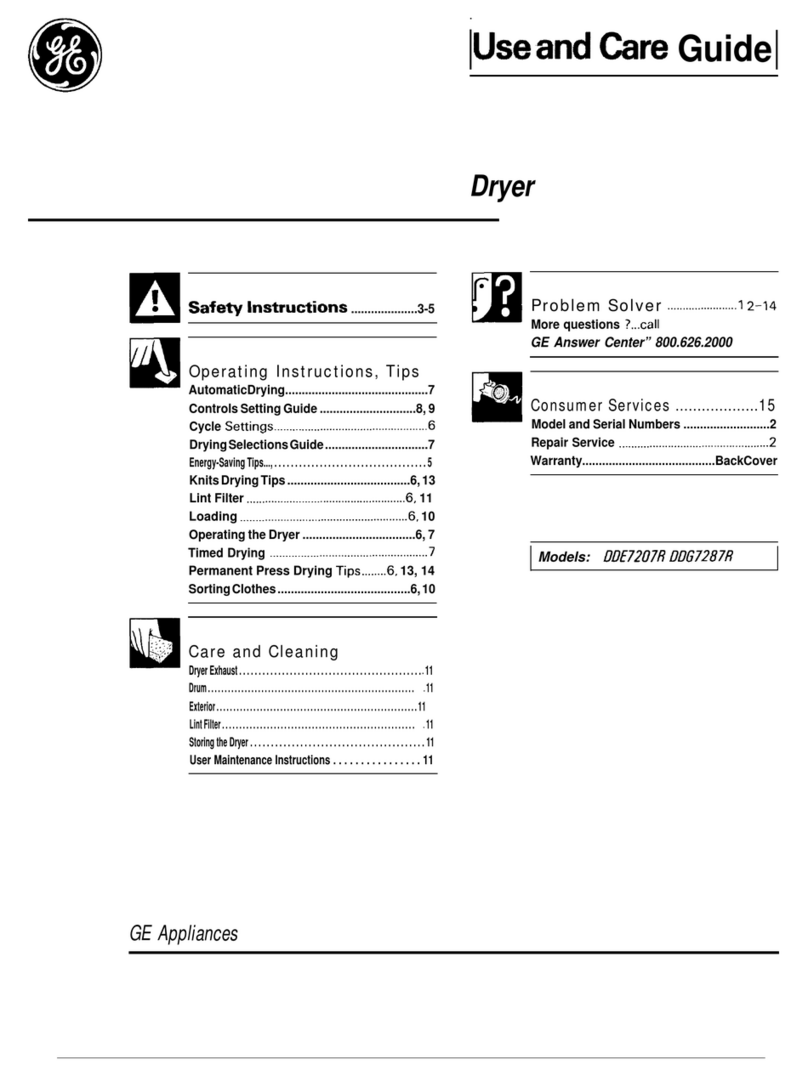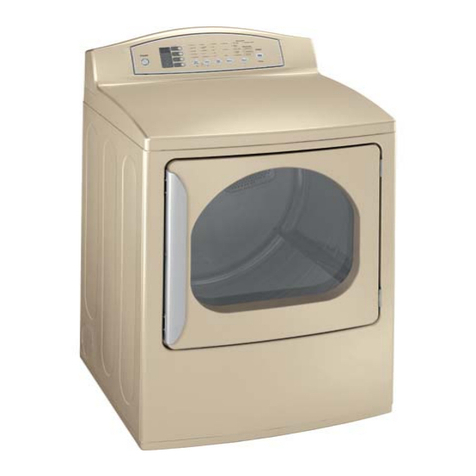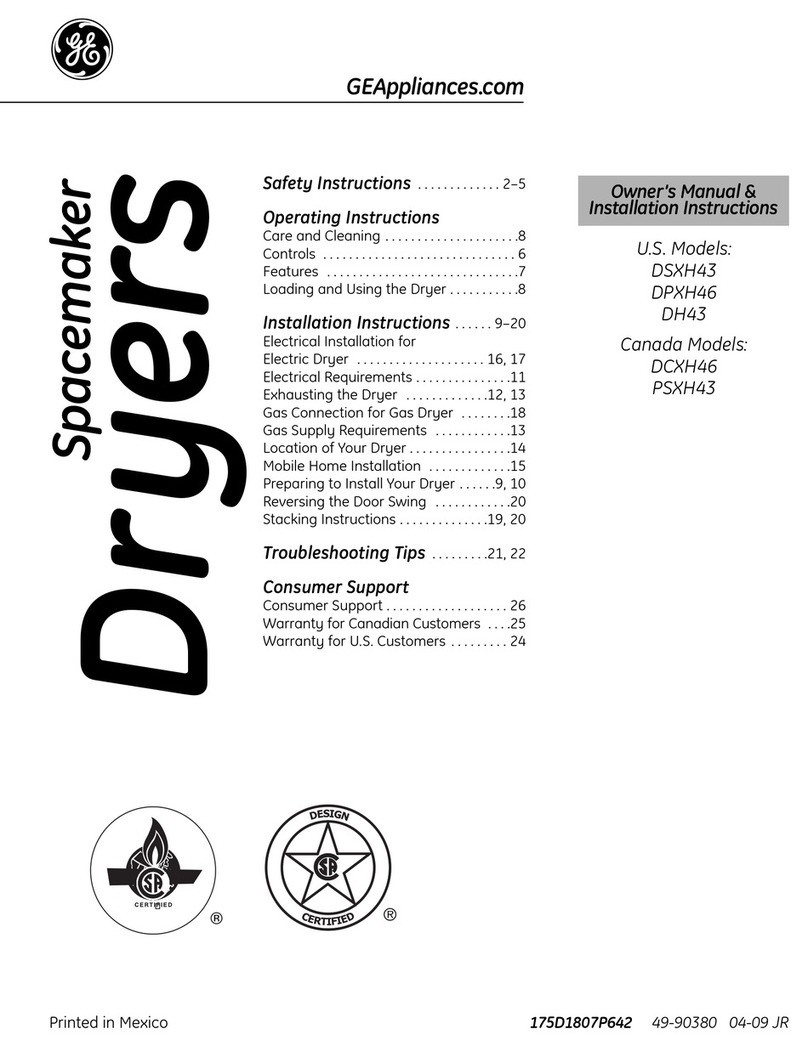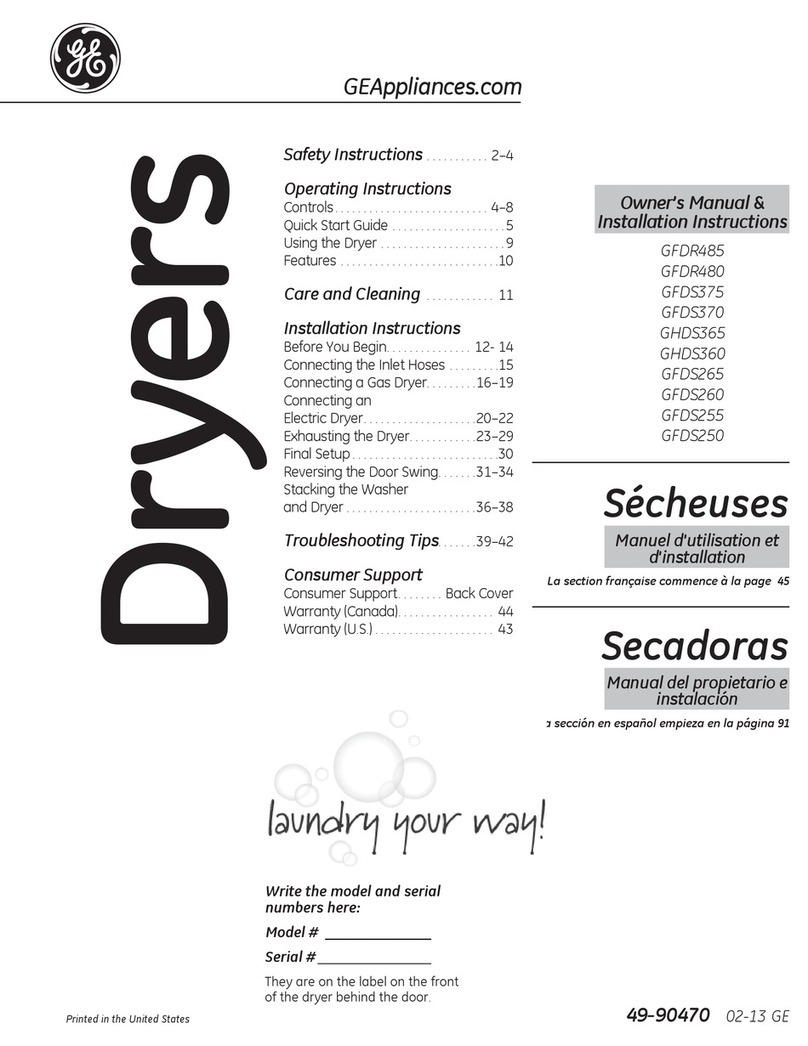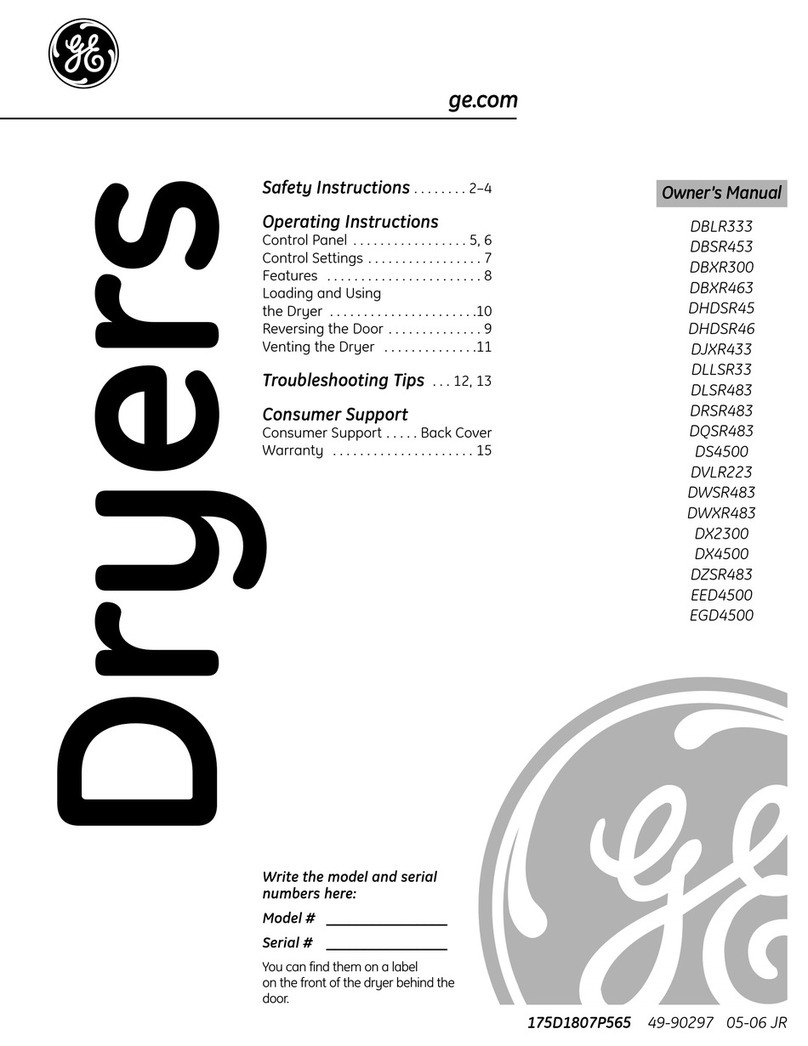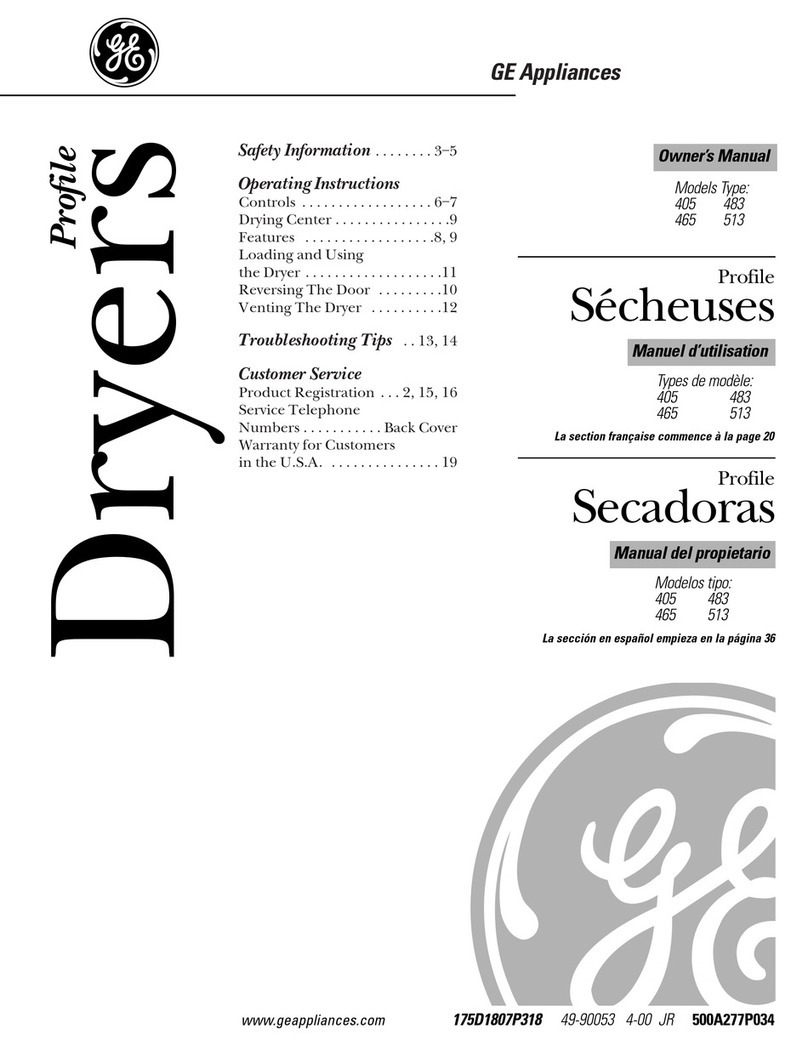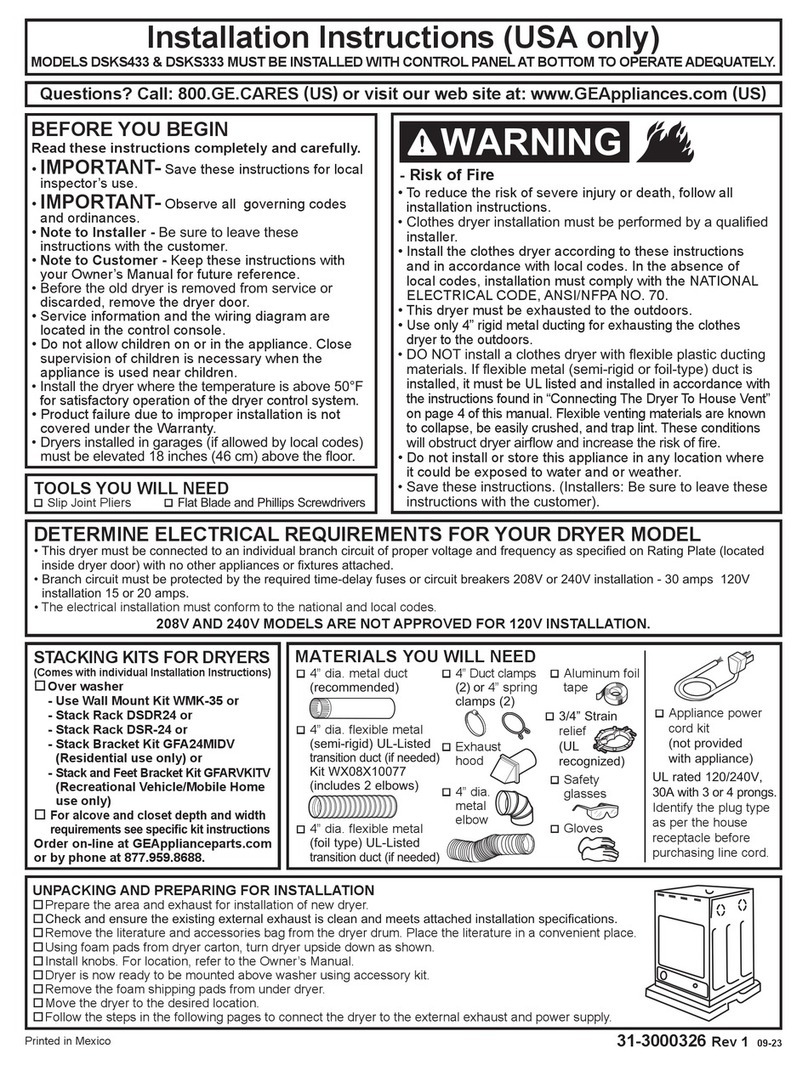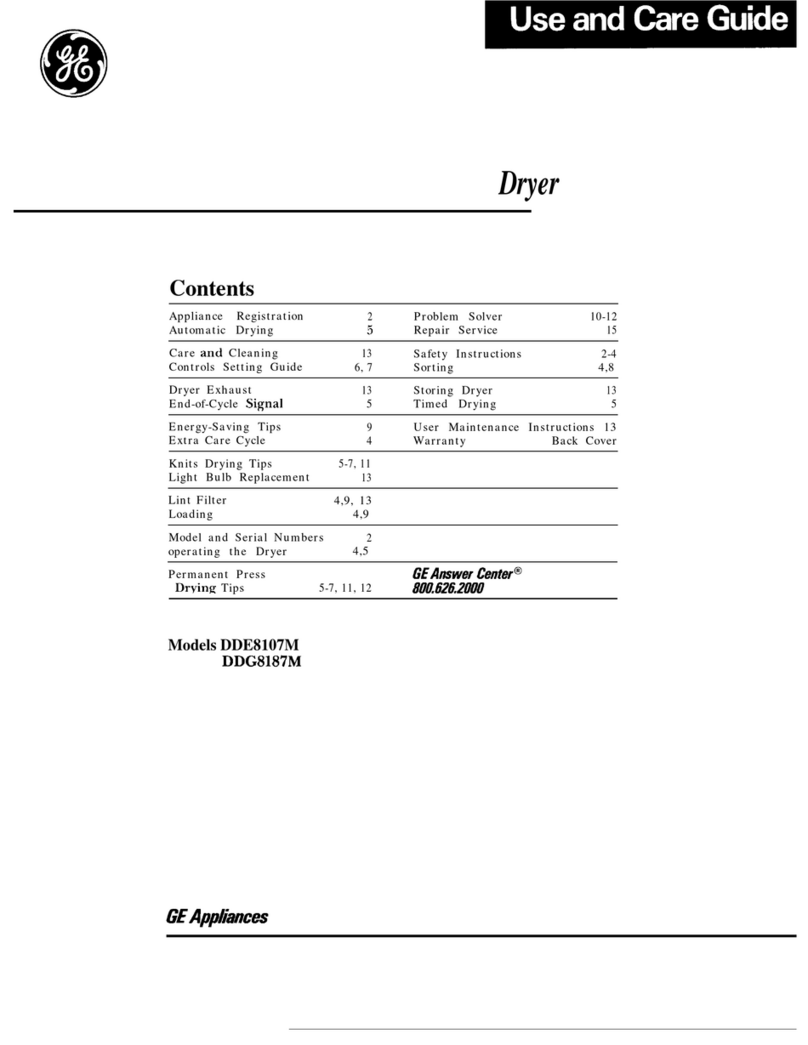
6
DRYER OPERATION
The dryer drum rotates clockwise at 48 – 54 rpm
as viewed from front. On electric models, air is
drawn into the heater housing and across the
open coils of the electric heater. On gas models,
air is drawn into the combustion chamber and over
the burner flame. The air is then pulled through
the tumbling clothes, picking up moisture and lint.
Lint is filtered out as air passes from the drum,
across the filter screen and into the blower duct,
where it is discharged out the vent. The bias
control thermostat, according to the setting of the
fabric selector switch, controls the air temperature.
The length of the drying cycle is controlled by the
number of minutes selected on the timer or auto-
matically controlled by the timer, in conjunction
with the thermostat, for the type of fabric selected
(automatic dry cycles).
ACCESSINGTHE DRYER COMPONENTS
Top Panel Removal
The top panel is held in place by two spring clips
locatedat the frontofthedryerandtwotabs located
at the back. To release the clips, use a stiff putty
knife inserted between the top and front panel at
the locations shown at right. Holding the putty knife
in a horizontal position, push in on one spring clip to
release that edge of the top. Repeat with the other
clip, lift the top at the front and disengage it from the
tabs at the rear.
START HIGH
MEDIUM
FLUFF
MORE DRY
MORE DRY
= PREFERRED REGULAR SETTING
80 MIN
70
60
50
40
30
20
LESS DRY
LESS DRY
COOL
DOWN
AUTOMATIC
COTTONS
AUTOMATIC
PERMANENT
PRESS
TIMEDDRY
3Cycle Automatic HeavyDutyLargeCapacity
STARTTEMPERATURE
Front Panel Removal
The remove the front panel, disconnect power and
remove the top panel. Once the top panel is off,
remove the two Phillips screws, one on each side,
located on the top inside edge of the front panel.
Disconnect the two wires from the door switch.
2 Phillips screws
Starting at the top edge, pullthefrontpanelforward.
3guide clips align the frontpaneltothesides. Once
the clips are released, lift the front panel to remove.
Guide Clips
Air Duct
Front Panel Air Duct
The front panel air duct is glued to the front panel.
Should the air duct need to be replaced, an air duct
seal will also be required. The foam air duct seal is
gluded to the air duct and seals between the duct
and the opening for the blower wheel on the blower
housing. To replace the air duct or install a replace-
ment front panel, remove the front panel, remove
the lint filter, remove the 2 Phillips screws from the
lint trap cover and remove the lint trap cover. Using
a sharp knife, cut the adhesive between the air duct
and the front panel. If reinstalling the original front
panel, use a putty knife to remove as much of the
old adhesive as possible. Apply adhesive along the
edgeoftheairductand position it on the front panel.
Air Duct Seal
